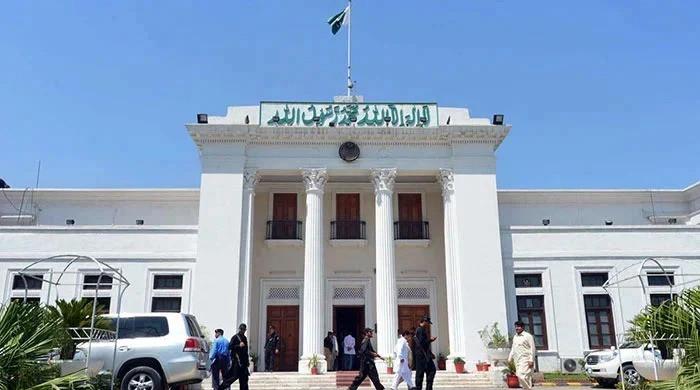Khyber Pakhtunkhwa’s mines and minerals amendment is an update of the 2017 law, with the main objective of attracting national and foreign investments, improving transparency and curbing illegal mining to take advantage of the vast mineral resources of the province for economic development.
This comprehensive legislation, detailed in a recent white paper, addresses governance, application and economic development while prioritizing transparency and environmental responsibility. The definitions have worsened and the key roles now require qualified mining engineers or geologists selected by merit. The Court of Appeals, previously chaired by the Secretary of Minerals, will now be directed by a former Judge of the Superior Court to guarantee impartiality. The new agencies, such as the mineral investment facilitation authority and a mineral test laboratory, aim to attract investors and improve technical supervision.
The 2025 bill extends its scope throughout the province, with special provisions for fused districts and subdivisions until December 31, 2030, which guarantees a gradual integration that respects local customs. The bill emphasizes transparency through a system of legally binding online mining, requires environmental and social safeguards and prioritizes the rights of the community, CSR and local employment.
Similarly, its objective is to establish a special mines force to prevent illegal mining and the establishment of an independent mining court for justice. The strength of special mines is a key provision in the bill, aimed at enforcing regulations and stopping illegal mining. The force is designed to combat illegal mining and stop the ‘mafia’ that occupies mineral resources in KP, particularly in the fused tribal districts, where it is estimated that 3,500 mines are latent or not regulated.
It will be a uniformed unit with powers to register FIR, make arrests and stop illegal mining activities, including the confiscation of the team. The force will operate under the KP mineral development authority, a new body proposed in the bill to supervise licenses, permits and application. A special court for mines and minerals will guarantee rapid trials within 120 days, backed by dedicated police stations. This contrasts strongly with the lack of robust application of the 2017 law, promising an offensive against unauthorized activities.
The controversy related to less benefits for local communities is probably due to the different political interpretations of their provisions, particularly in merged districts, where communities have historically been based on mineral resources. The Law 2025 significantly improves the benefits for local communities compared to the 2017 Law by prioritizing their access to mineral titles, protecting usual actions and guaranteeing environmental restoration.
Through the minimum local content requirements, the law establishes that mining companies prioritize local employment, obtain goods and services from nearby companies and invest in community development projects such as schools and health facilities. It also includes a non -contributory free interest of 10% for the province, generating income that can finance regional infrastructure. Unlike the 2017 law, which lacked explicit mandates, the bill 2025 ensures that communities, especially in the merged districts, benefit economically through jobs and contracts.
The bill has caused political controversy with several critics that express concerns about federal overreach. One of the controversies refers to Section 6 (I), which allows the Licensing Authority to implement not only the recommendations of the Mineral Investment Facilitation Authority (MIFA) but also the suggestions of the Federal Mineral Wing. Since mining is a provincial subject under amendment 18, this clause has caused concern about federal overreach in KP legislative and administrative domains.
However, the bill explicitly establishes that the Licensing Authority can “implement recommendations from the Mineral Investment Facilitation Authority and can implement the suggestion of the Federal Mineral Wing in relation to the powers and functions of the Licensing Authority” (Section 6 (i)). This has been framed as a discretionary, not mandatory disposition.
The bill also emphasizes the provincial autonomy by demanding that the licensing authority guarantee the consistency between the provinces (Section 6 (2) (d)), which aligns with the return of mining of the 18th amendment to the provinces. The role of the federal mineral wing is advice, and its suggestions are subject to provincial approval, which guarantees that the province retains the final control.
The reconstitution of Mafa under section 19 has also caused controversy. The agency, previously composed of seven members, including the Minister of Development of Mines and Minerals, will now expand to 14 members, including five provincial ministers. The bill also allows the president of Mafa to co -opt any person as a member, a movement that critics say that he opens the door to politicization and non -transparent appointments.
It should be clear that the expansion of MFA to 14 members, including provincial ministers and a federal representative (Section 19 (2)), intends to improve the coordination and representation of interested parties. The inclusion of the federal entrance (clause (l)) is limited to a “guest” member, which preserves the provincial domain.
The president’s power to co -opt of the members (Section 19 (3)) is balanced by the transparency requirement in the annual MIFFA reports (Section 20 (3)), which must be publicly disclosed through the Mining Cadastros System (Section 9 (5)).
The interested parties of the private sector have also expressed concerns about section 2 (KK), which requires joint companies with government -owned companies for any large -scale mining project that involves a capital investment of RS5 billion or more.
Critics argue that if this decision is left at the discretion of the government, without a clearly defined relationship or conditions of association, it will act as a barrier to the participation of the free market, thus deteriorating the confidence of investors.
It becomes increasingly important to clarify that the requirement of joint companies with companies owned by the Government in large -scale mining (capital investment greater than RS5 billion) is clear about the condition that the terms and conditions, including association relations, will be “determined by the Government” (Section 2 (KK)).
This allows flexibility to negotiate terms by case by case, instead of imposing rigid proportions. The exemption for cement factories and the Mineral Development and Management Company Khyber Pakhtunkhwa (Section 46 (6)) indicates a directed applicability, not a general barrier to private investment.
Similarly, critics have also discussed the treatment of the bill of strategic minerals and rare earths. These must be defined and notified by the provincial government, or in the Federal Mineral Wing Guide through Mifa. The lack of clear definitions or fixed criteria in the bill has led to apprehensions that the valuable mineral resources may be under central control.
However, strategic minerals are explicitly listed in Annex I (paragraph 9), while rare earth minerals are defined as those declared by the provincial government through the notification of the Gazette (Section 2 (SSS)). The bill does not give control to the federal government; Instead, KP retains the authority to designate and regulate these minerals (Section 27 (2)). The role of Mifa is the advisor (section 20 (1) (k)), and the final decisions rest with the provincial government.
Finally, multiple clauses further extend the advice powers to the federal mineral wing on key operational and financial matters, such as the royalty structure, price formulas, models agreements, the powers of the licens authority and mining application systems.
The federal mineral wing advice on royalty structures (section 19 (f)), price formulas (section 19 (g)) and model agreements (Section 19 (i)) depend on the review and recommendations of MIFA. For example, royalty rates are prescribed by the provincial government (Section 84), and Mifa recommendations must align with KP policies (Section 20 (1)). The Mining Cadastre System (Section 9) and the license processes (Section 6) are administered provincially, which guarantees that the federal entrance remains non -binding.
The new framework requires the establishment of auction committees at the provincial and district level to administer transparent and competitive mineral rights auctions. In addition, a defined mortgage mechanism, which allows mineral holders to ensure financing through their own assets without mortgageing the mineral title itself.
The bill balances provincial autonomy with a pragmatic collaboration, ensuring KP control over its mineral resources while allowing structured federal dialogue. It establishes a bold vision for sustainable growth. Key safeguards include discretionary language, transparency mechanisms and provincial supervision. Concerns about federal overreach or barriers of investors are affected by the explicit provisions of the Project for Provincial Discretion and the specific flexibility of cases.
The writer is the information advisor of Khyber Pakhtunkhwa’s prime minister.
Discharge of responsibility: The views expressed in this piece are that of writer and do not necessarily reflect the editorial policy of PakGazette.TV.
Originally published in the news




